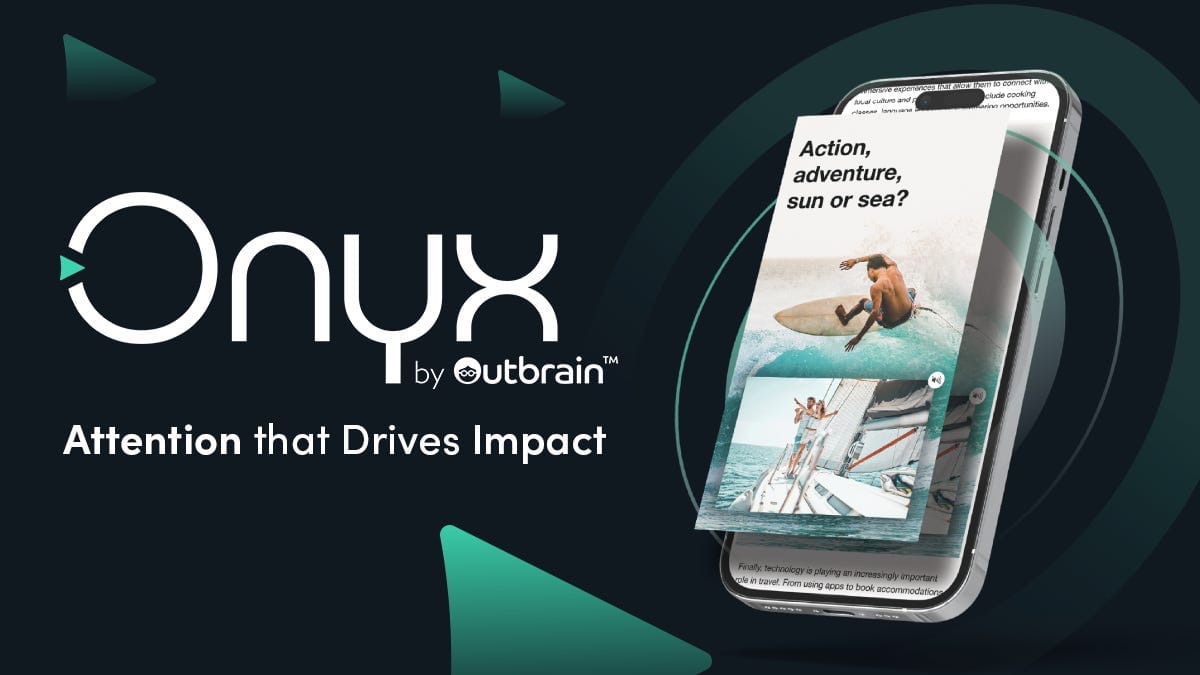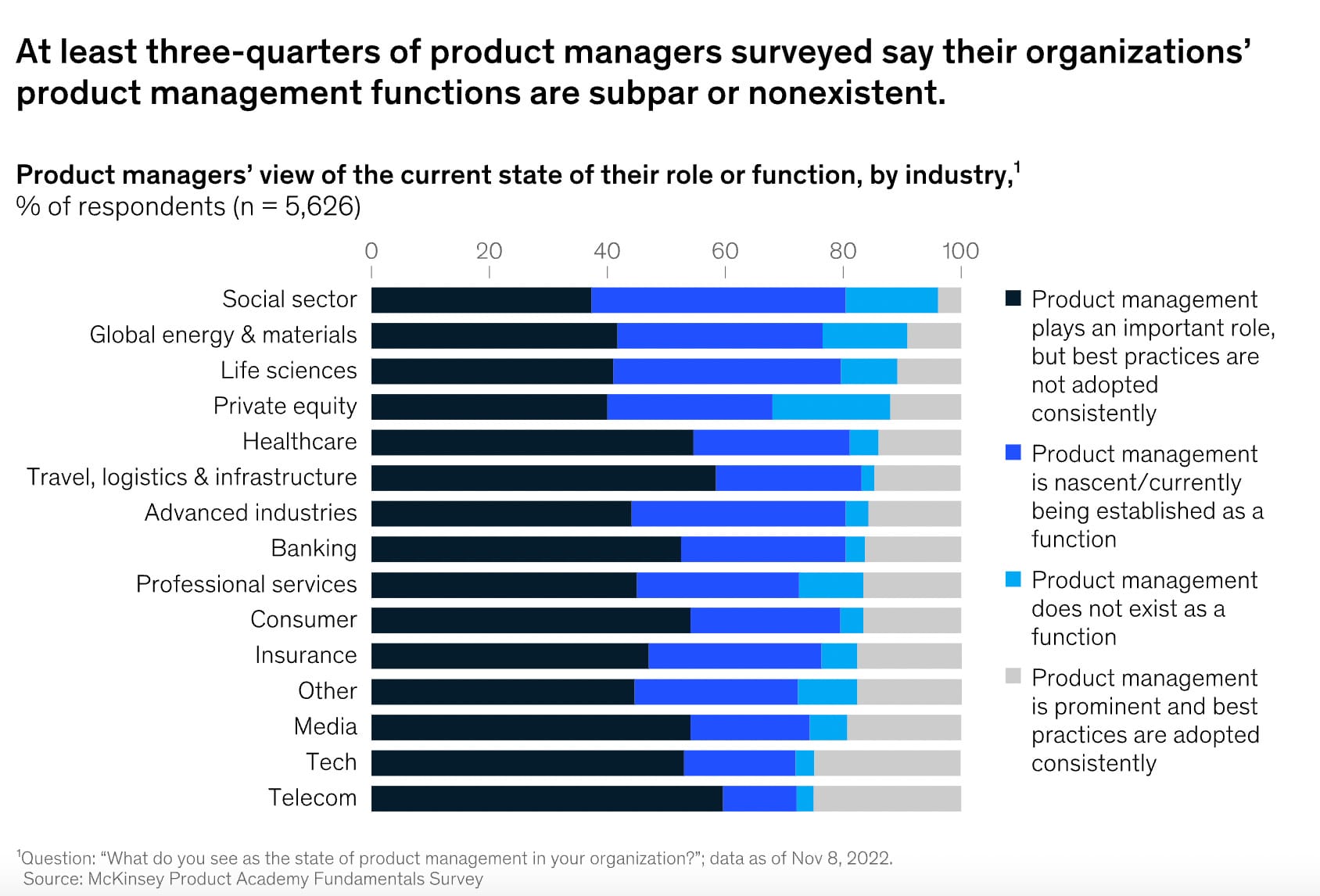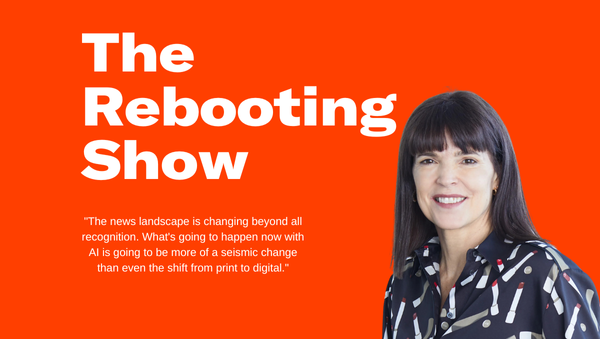Product people
The Rick Rubins of tech
I’m putting together a report on the state of subscriptions at publishers. Please take five minutes (maybe seven) to take this anonymous survey about the health and focus of your subscription business.
This week, I wrote about why we live in the golden age for product people. Even if your job isn’t in a product group, you still want to be a product person, trust me. Also: the WSJ’s audience-first strategy. First up, a message from The Rebooting supporter Outbrain about its new brand advertising platform, Onyx.


These days, brands nurture multiple touchpoints throughout the digital journey, with each moment influencing their impact with consumers. Easier said than done, with the average time spent on a digital ad being just 0.7 seconds. It means brands need to win attention.
Onyx by Outbrain™ is a new branding platform, attentive by design. It offers an environment brands can rely on to drive incremental, high-attention video and display moments across the world’s premium publishers, for stronger brand impact.
Onyx is third-party verified through our partnership with DoubleVerify, and analyzed by leading Attention Measurement firm, Adelaide.
Product people

In the 1967 film “The Graduate,” Dustin Hoffman’s young character is taken aside at his college graduation party and given a piece of career advice by Mr. Maguire: “One word: Plastics.” The point was the world then – pre-paper straws – needed a tremendous amount of plastics, so going into that field was a reliable route to a comfortable life. It wasn’t a spiritual journey, but you might get a pool.
These days, Mr. Maguire would likely answer: Product. For all the grief that the tech industry gets, it has replaced the automobiles as the totemic industry of American ingenuity and economic prowess. There are fewer sure paths into a comfortable life. The problem was the need to grind through computer science and engineering courses – and it’s only a matter of time before “copilots” take the controls – but product is the most attractive tech field because it doesn’t require doing any of that.
The product management field has exploded. It’s no mistake that former Airbnb product manager Lenny Ratchitsky has one of the most popular Substacks with over 500,000 subscribers and a multimillion dollar solo business.
But here’s the thing, you don’t need to be a product manager or a product marketer to be a product person. Being a product person is a vibe that means you can connect the dots within a business to apply technology to a business challenge and create new value. Being a product person is an identity. Product people usually can’t code a lick. At best they’re the tech industry’s Rick Rubin, who told Andersen Cooper he could “barely” play an instrument, adding, “I have no technical ability. And I know nothing about music.” At worst, they’re middle managers pretending to be “men in the arena.”
I like to ask people if they consider themselves a product person, and most say they do. It’s a badge of honor, saying you have a sophisticated, if surface, understanding of technology and how it can be applied, at least in the abstract and from a safe altitude. You understand enough to be dangerous, and what is truly possible in a time frame. You understand when the people building the product are dragging their feet, and you understand when the laws of physics and limits of engineering are reached. Just saying “I want it now” is not a sign you’re a product person.
Being a product person means having a point of view and courage to make decisions for the long term. Zuckerberg is a product person. He’s made key product decisions and tuned out criticism.
On this week’s People vs Algorithms, we discussed product people. I don’t see how someone can run a technology company without being a product person – Steve Jobs was a product marketer, even if he wasn’t technical – and increasingly most company leaders will need to be product people, connecting the dots between business goals, tech capabilities (and timelines!), and the varied constituencies. Not being a product person is like not understanding a P&L.
That doesn’t mean they need to be engineers. In fact, that can lead to myopic thinking. Detroit has long been run by engineers, only the software prowess required for the transition to e-vehicles means that engineering playbook – playing suppliers against each other and relying on just-in-time manufacturing methods – don’t work.
Elon Musk is a prototypical product guy. He has an attractive set of product rules we review, which would serve anyone well to follow in most endeavors. Question every requirement. Delete any part or process you can. Simplify and optimize. Automate. All sensible.
Then again, Musk’s chaotic reign at Twitter is calling into question his product chops. It’s hard to understand how removing headlines from tweets, or whatever he’s calling them now, is a product advancement. He and Linda Yaccarino point to the velocity of product features shipped, only “content moderation” is the key product feature. Otherwise you own a message board.
The media industry has long struggled with product, mostly because it has not been run by product people. The product managers at media companies don’t rank their organizations’ product acumen particularly highly.

Managing a media product is difficult, considering all the tradeoffs needed to placate various constituencies. As a result, many media products are not good. The entire experience is off. I visited The Daily Beast this week to find a single sentence viewable under an avalanche of ads pushing down from the top, bottom and sides. Welcome to Q4. We all have numbers to hit.
I used to joke that you knew a publishing organization was dysfunctional when it had an incredibly complicated nav and sub nav with a carousel. It was a sign that nobody had a point of view or the heft to make a call. A camel is a horse designed by committee. Now you can tell how desperate a publisher is by the product choices it makes. I get the pressures publishers face, but you cannot put out horrible products in this world and expect to stay in business. There are simply too many choices, and tools will come about to counteract this adversarial approach anyway.
The early examples of publishers using AI are either very niche or eye-rolling. It’s hard to see how The Messenger’s AI deal to enforce “balance” will work any better than… editing. And G/O Media is a hammer that sees everything as an efficiency nail, so expect more bot-written content that is sure to thrill audiences. Rather than improve the product, most publishers see AI as a way to cut costs.
The world, particularly publishing, needs more product people.
Listen to People vs Algorithms on Apple, Spotify or wherever you get your podcasts.

Enter the Webbys
Being recognized by The Webby Awards is a huge achievement and only the very best are selected by our judging academy. By participating, you place your work on the same stage as boundary-pushing talent, like past Webby Winners Apple, Gucci, National Geographic, Patagonia, Questlove, SavageXFenty, Spotify, SZA, Tracee Ellis Ross and Takashi Murakami.
Audience first
It’s hard to come up with an all-encompassing digital strategy that doesn’t seem like a pu pu platter of the cliches and received wisdom. Initially, I read new WSJ editor-in-chief Emma Tucker’s newsroom missive in that vein. Being “audience first” is akin to saying you’re “for the children.” Safe ground.
But listening to Tucker talk at a Semafor event at a Korean car dealership showroom this week, I recognized that what she’s proposing is simple but an important shift in thinking. Being audience first means working backwards from audience needs. “What do they need from us that only we can provide?” I noticed Tucker used the word “distinctive” a good dozen times.
Too much of journalism is still done with an eye to others in the profession. There can be a sense that the publication will decide what is most important. What Tucker’s talking about with being audience-first echoes Dmirtry Shishkin’s audience-needs framework.
The challenge will be to make that integral to the product. It’s hard to believe an audience-first mantra with the call-to-cancel nonsense. Connecting that overall mission to all parts of the product is imperative.

The audience-first path to sustainable revenue growth
Turn fleeting readers into loyal audiences with CLV segmentation and customer experience obsession. Here's how House of Kaizen creates sustainable recurring revenue growth with audience diversity.
Thank you for reading. Send me a note with feedback by hitting reply.
Thanks to Outbrain, the Webbys and House of Kaizen for the support.




